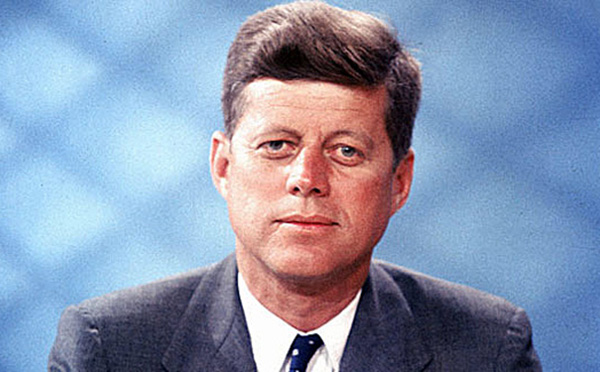Abraham Lincoln, Franklin D. Roosevelt, and John F. Kennedy all entered the American Presidency at moments of great fear, yet each man led the nation to greater triumph.
Coming into the presidency at a moment of crisis and “maximum danger,” John F. Kennedy spoke of the trumpet summoning the American people again. Kennedy referred to past periods of significant danger to the Constitution and the American way of life. The inauguration of John F. Kennedy ranks as one of the three most important, beginning with Abraham Lincoln in 1861 and Franklin D. Roosevelt in 1933. All three men faced tremendous obstacles that threatened the very nature of the democratic system, and all three men prevailed.
Abraham Lincoln in 1861
At the time Abraham Lincoln gave his Inaugural Address on March 4, 1861, seven Southern states had already left the Union to form a new nation, the Confederate States of America. With its own Constitution and government under the leadership of Jefferson Davis, the Confederacy provided President Lincoln with a threat no other president had ever had to face. The nation was split and Lincoln was keenly aware that other states might still bolt the Union.
The 1850s had been a decade of non-ending sectional strife over the issue of the expansion of slavery into the new territories. From the Compromise of 1850 to John Brown’s 1859 raid, the nation was both riveted and torn by violence. As Lincoln himself noted, “I enter upon the task…[of the Presidency]…under great and peculiar difficulty.”
Lincoln sought to calm the nation and reassure the South particularly that the new administration would not “endanger” the “peace and security” of that section. Further, he affirmed the right of slavery in the South. But the seeds of civil war were sown and President Lincoln would spend the rest of his presidency ending that Civil War.
Franklin D. Roosevelt in 1933
Perhaps the greatest national crisis since the Civil War, the Great Depression signaled universal hopelessness. FDR, however, began his presidency saying on March 4, 1933, that the American people had nothing to fear but fear itself. “Our Constitution is so simple and practical,” FDR continued, “that it is possible always to meet extraordinary needs by changes in emphasis and government without loss of essential form.”
Harnessing all the powers available to him, Roosevelt immediately implemented the “New Deal” with bank reform, followed by other measures to put Americans back to work and stabilize the economy. Like Lincoln, he expanded presidential powers in order to preserve the Union. It was a time of uncertainty and some doubted democracy could survive. It did, under Franklin Roosevelt.
John F. Kennedy in 1961
Kennedy’s brief Inaugural Address highlighted fears of global catastrophe. Referring to the US and the USSR, John F. Kennedy told the world that both sides must begin anew “the quest for peace, before the dark powers of destruction unleashed by science engulf all humanity in planned or accidental self-destruction.”
It was a time of bomb shelters; a time of military escalation. It was the time of the “missile crisis” and dire warnings of a nuclear winter. The prospect of war went beyond battlefields and reverberated into the civil defense shelters advertised everywhere with yellow placards. During his brief tenure in office, John F. Kennedy steered the ship of state through rough waters never before tested.
Three Important Inaugurations
1861, 1933, and 1961 all represent significant watershed years, periods when, as Lincoln once said, the nation would experience a new birth of freedom, and that American government “shall not perish from the earth.” These presidents came from varying backgrounds, yet each one may have saved America from certain calamity.
Source:
- The Inaugural Addresses of the Presidents, John Gabriel Hunt, editor (new York: Gramercy Books, 1997)








